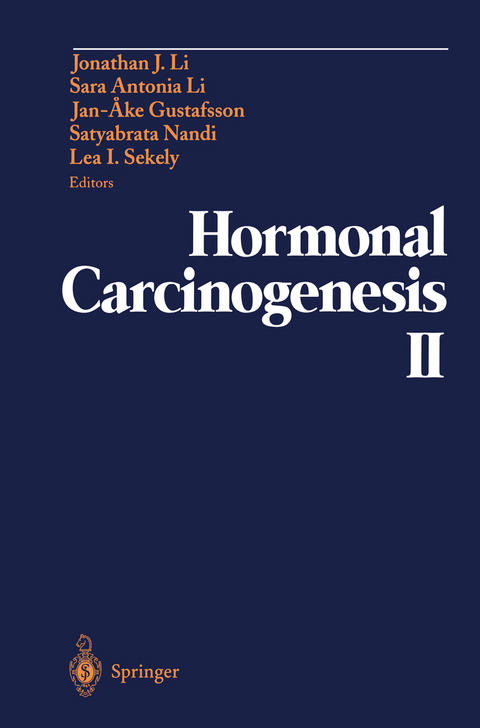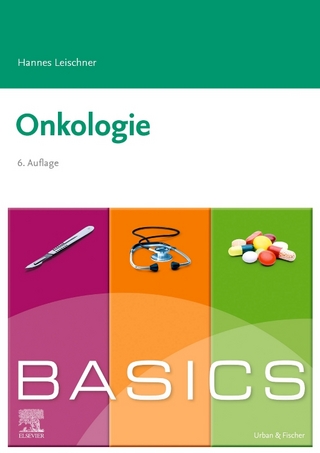
Hormonal Carcinogenesis II
Proceedings of the Second International Symposium
Seiten
2011
|
Softcover reprint of the original 1st ed. 1996
Springer-Verlag New York Inc.
978-1-4612-7506-0 (ISBN)
Springer-Verlag New York Inc.
978-1-4612-7506-0 (ISBN)
For those of us who have labored in the field of hormonal carcinogenesis, it has been most gratifying to see its rapid growth and increasing relevance in recent years. Although many factors and forces have contributed to this phenomenon, a few appear particularly significant. Perhaps foremost is the realization that two of the most prevalent cancers which afflict women and men; that is, breast and prostate, have essential hormonal component(s) to their etiologies. This should not surprise us since the high frequency of these cancers in human populations has to date not been attributed to any exogenous physical, environmental, or dietary factor(s). A similar argument may be applied to other less prevalent but equally important cancers including ovarian, endometrial, testicular, cervico- vaginal, pituitary, thyroid, and sex hormone-associated hepatic neoplasms. The Office of Research on Women's Health and many women's interest groups have been instrumental in fostering research and public awareness on women's cancers. Similar concern is beginning to emerge for solely male cancers by other groups.
To illustrate an example of the potential pervasive role of hormones in the human, particularly sex hormones, Figure I depicts the endogenous and known exogenous exposures to estrogens and progestins during a woman's lifetime, which may contribute to increased risk for hormonally-associated cancers . . = iii M. A. P. _ GI en 2 PoOlmenopauoal ~ EstrogDn ~ Proge. tln GI en J/ Ovulatory _ 2 Cyel. iii W DES EIP Menotr". 1 Ol,order.
To illustrate an example of the potential pervasive role of hormones in the human, particularly sex hormones, Figure I depicts the endogenous and known exogenous exposures to estrogens and progestins during a woman's lifetime, which may contribute to increased risk for hormonally-associated cancers . . = iii M. A. P. _ GI en 2 PoOlmenopauoal ~ EstrogDn ~ Proge. tln GI en J/ Ovulatory _ 2 Cyel. iii W DES EIP Menotr". 1 Ol,order.
Introductions.- State Of The Art Lectures.- I. Epidemiology: Hormonal Cancers.- 2. Breast/Mammary Gland.- 3. Endometrium/Uterus.- 4. Kidney.- 5. Liver.- 6. Prostate.- Concluding Remarks.- CLINICAL FORUM: Risk and Benefits of Hormone Replacement Therapy and Oral Contraceptive Use.- Communications Session I. Epidemiology, Human Studies.- Session II. Cell & Molecular Biology, Metabolism.
| Zusatzinfo | 500 p. |
|---|---|
| Verlagsort | New York, NY |
| Sprache | englisch |
| Maße | 155 x 235 mm |
| Themenwelt | Medizin / Pharmazie ► Medizinische Fachgebiete ► Onkologie |
| Naturwissenschaften ► Biologie ► Biochemie | |
| ISBN-10 | 1-4612-7506-7 / 1461275067 |
| ISBN-13 | 978-1-4612-7506-0 / 9781461275060 |
| Zustand | Neuware |
| Haben Sie eine Frage zum Produkt? |
Mehr entdecken
aus dem Bereich
aus dem Bereich
Korrigierter Nachdruck 2020 mit allen Ergänzungen der UICC aus den …
Buch | Softcover (2020)
Wiley-VCH (Verlag)
42,90 €
Resilienz innovativ stärken : ein Praxishandbuch
Buch | Softcover (2023)
Kohlhammer (Verlag)
36,00 €


